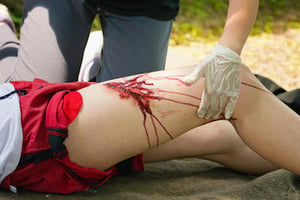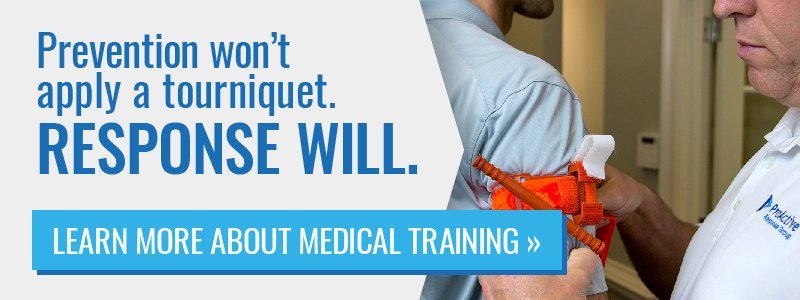 Two minutes. Maybe three; four if you're lucky — that's all the time you have to treat a serious hemorrhage before it's fatal. The fact that a person can bleed out in just two to four minutes is proof of how important it is to know how to stop massive bleeding.
Two minutes. Maybe three; four if you're lucky — that's all the time you have to treat a serious hemorrhage before it's fatal. The fact that a person can bleed out in just two to four minutes is proof of how important it is to know how to stop massive bleeding.
While reading a blog article cannot adequately equip you to treat a life-threatening injury like severe hemorrhage (you need hands-on, scenario-based training for that), the information in this article provides a good starting point.
The effectiveness of basic hemorrhage control
Did you know that basic hemorrhage control techniques could prevent 60% of fatalities in an event? That means, statistically speaking, that if an active shooter walked into your workplace, school, or religious facility, and 5 people were shot, you could potentially save three of them.
While three lives saved isn't five, it's much better than zero, which is likely the number of people you would be prepared to treat without any training or knowledge of how to stop massive bleeding.
Good Samaritan Laws
Many civilians worry that treating a person in an emergency could result in legal ramifications afterward. However, thanks to Good Samaritan Laws, you can treat victims facing life-threatening injuries without fear of liability as long as:
- Care was given as the result of the emergency
- Care was not provided by the same individual who initiated the emergency or injury
- Care was not provided recklessly
If a bleeding victim is unconscious, consent for treatment is implied, and failure to at least call for help is in many states considered negligence.
Training to save lives
Investing three hours of your life in emergency medical response training could save another life — perhaps even your own. It's not enough to have a Bleeding Control Kit on hand; you must also know how to use the tools inside.
With the right training you can have the knowledge and confidence you need to apply a tourniquet or pack a would in an emergency. Click on the banner below to contact us about training opportunities today.
.png?width=499&height=133&name=Logo-menu%20(1).png)



